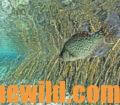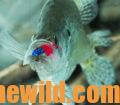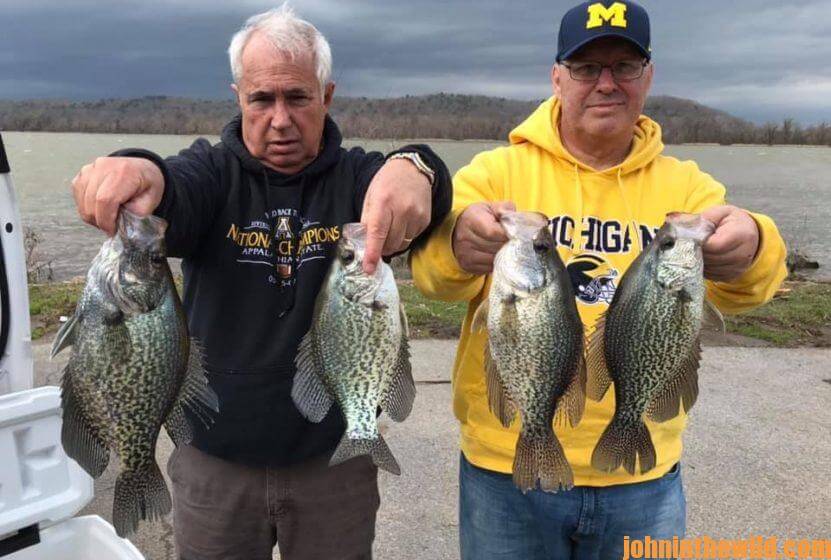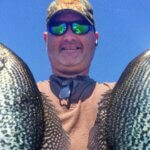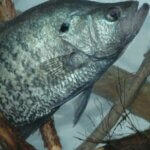Editor’s Note: The most-dependable place to find and catch crappie throughout the spring is locations where the prespawn crappie hold before going to the bank, since crappie don’t all go to the banks at the same time. Nor do they spawn-out all their eggs the first time they move to the banks. A crappie may go to the bank to spawn several times during the spring and then return to its prespawn spots before going back to shallow water to spawn. The crappie also move to prespawn sites to hold before they move offshore to deeper water. Let’s look at where some of the best crappie-fishing guides look for and catch prespawn crappie.
The other lake Mike Carter (http://www.anglingadventures.info/ and https://www.facebook.com/michael.carter.35977897 or call 423-802-1362), of Cedar Bluff, Alabama, guides for crappie on is Lake Weiss, often known as the Crappie Capital of the World. This lake in north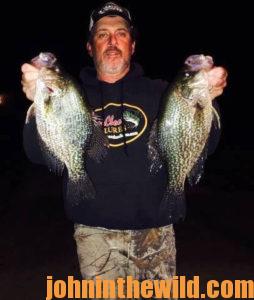 east Alabama and northwest Georgia draws the largest number of crappie fishermen in the State of Alabama. At Weiss, Carter changes tactics because Weiss isn’t known as a grass lake like Lake Guntersville is.
east Alabama and northwest Georgia draws the largest number of crappie fishermen in the State of Alabama. At Weiss, Carter changes tactics because Weiss isn’t known as a grass lake like Lake Guntersville is.
“In February, I start looking for underwater treetops and trees that have fallen over into the water and submerged to fish,” Carter explains. “We catch a lot of large crappie in late March and the entire month of April with this tactic on Weiss, a non-grass lake. We’ll be fishing from 3-6 foot deep. Most of the time I’ll be casting and retrieving a Slider jig (https://www.sliderfishing.com/), which has a flat head and lets the grub glide through the water. If I’m fishing with clients, I’ll still use the Slider jig but put a bobber above it. I’m fishing the Slider jig because that flat-headed type of jig will come over the underwater tree limbs without getting hung much better than a round-headed jig will.
“I usually fish a 1/32- or 1/24- or perhaps a 1/16-ounce Slider head, depending on how deep the water is. The other advantage to fishing the Slider jig is you can rig it weedless. Then when you’re fishing down in the treetops, you won’t get hung nearly as often as you will when you don’t rig the jig weedless. Once I slide the grub up the hook, then I turn it around and skin hook the grub, just as I will when Texas-rigging a plastic worm. I like the Bobby Garland grubs
(https://www.facebook.com/pg/BobbyGarlandCrappie/) in the pink phantom, blue ice and monkey-milk colors, since these three colors of grubs seem to produce best on Weiss in the spring.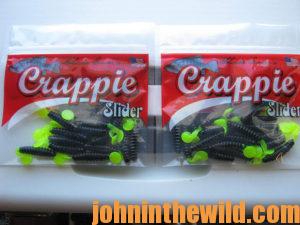
“I’m often asked why I’m fishing little jigs like the 1/32- and 1/24-ounce ones. I’ve found that my customers and I get more bites on the smaller jigs in the spring than we do on larger jigs. The crappie seem to love the slow fall of the smaller, lighter jigs better than the fast fall of a heavier jig. Most of the trees I’m fishing, you can see their stumps on the bank and use your depth finder to learn where the crappie are holding on the sunken tree limbs. I’m also asked about how much fishing pressure those trees receive. Well, yes, they do get a lot of springtime fishing pressure, but I’ve found that if you’re on the right tree at the correct time of the day, you can catch plenty of prespawn crappie. I’ll start fishing at 7:00 am and generally fish with 4-6 pound test line, because you can’t fish a heavy line when fishing a small jig and be effective.”
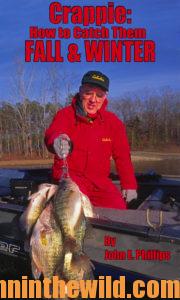 To learn more about crappie fishing in the fall and winter, check out John E. Phillips’ book, “Crappie: How to Catch Them Fall & Winter,” available in Kindle and print at http://amzn.to/16AzIZi. and click here for the audible link.
To learn more about crappie fishing in the fall and winter, check out John E. Phillips’ book, “Crappie: How to Catch Them Fall & Winter,” available in Kindle and print at http://amzn.to/16AzIZi. and click here for the audible link.
Tomorrow: Fishing Watershed Lakes and Rivers for Prespawn Crappie with Guide Brad Whitehead

